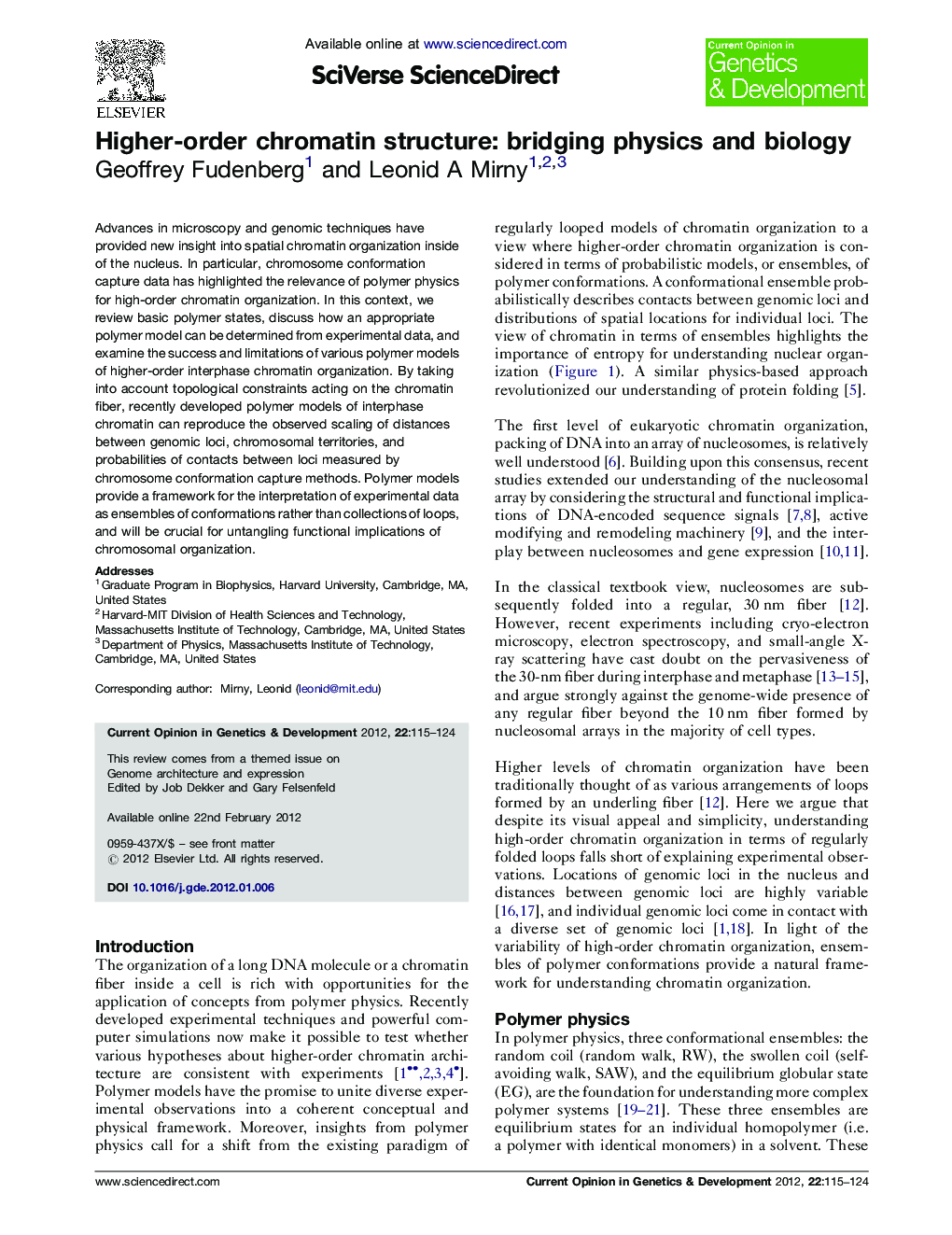| Article ID | Journal | Published Year | Pages | File Type |
|---|---|---|---|---|
| 2784862 | Current Opinion in Genetics & Development | 2012 | 10 Pages |
Advances in microscopy and genomic techniques have provided new insight into spatial chromatin organization inside of the nucleus. In particular, chromosome conformation capture data has highlighted the relevance of polymer physics for high-order chromatin organization. In this context, we review basic polymer states, discuss how an appropriate polymer model can be determined from experimental data, and examine the success and limitations of various polymer models of higher-order interphase chromatin organization. By taking into account topological constraints acting on the chromatin fiber, recently developed polymer models of interphase chromatin can reproduce the observed scaling of distances between genomic loci, chromosomal territories, and probabilities of contacts between loci measured by chromosome conformation capture methods. Polymer models provide a framework for the interpretation of experimental data as ensembles of conformations rather than collections of loops, and will be crucial for untangling functional implications of chromosomal organization.
